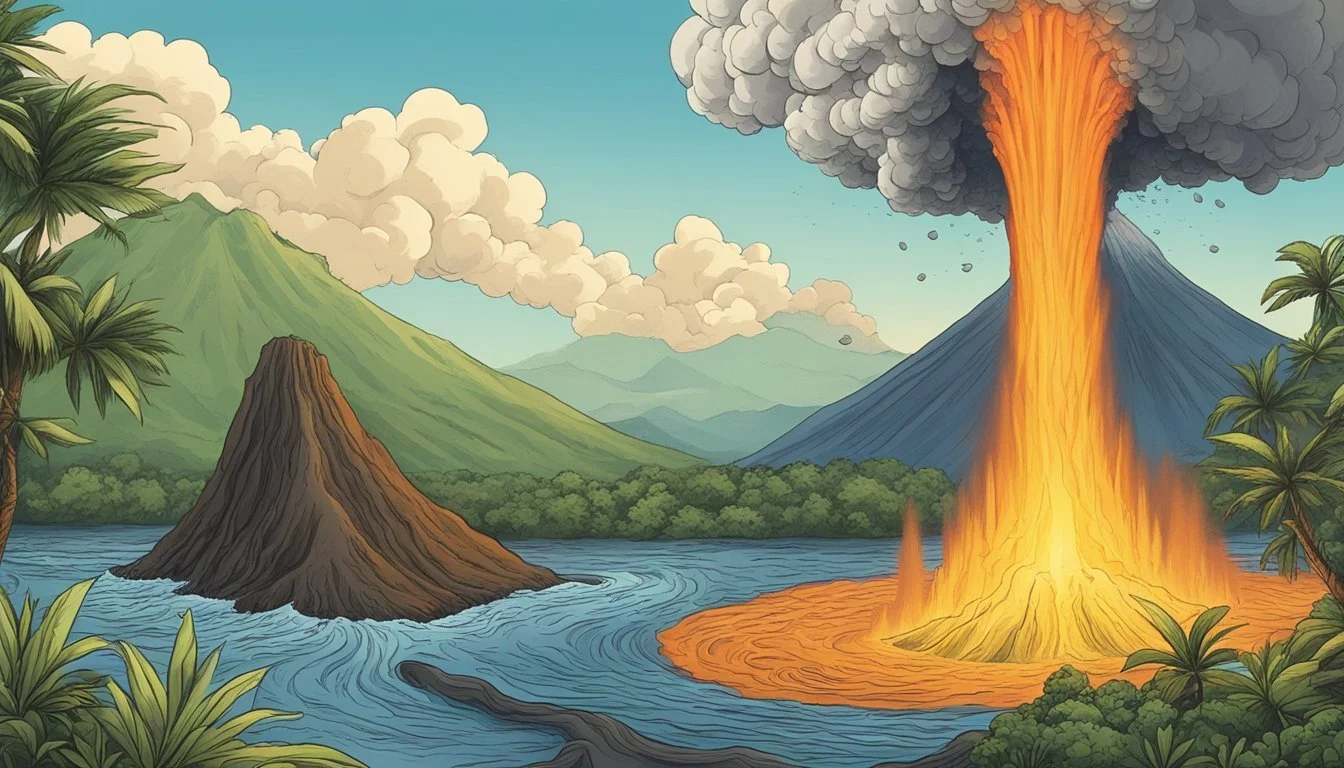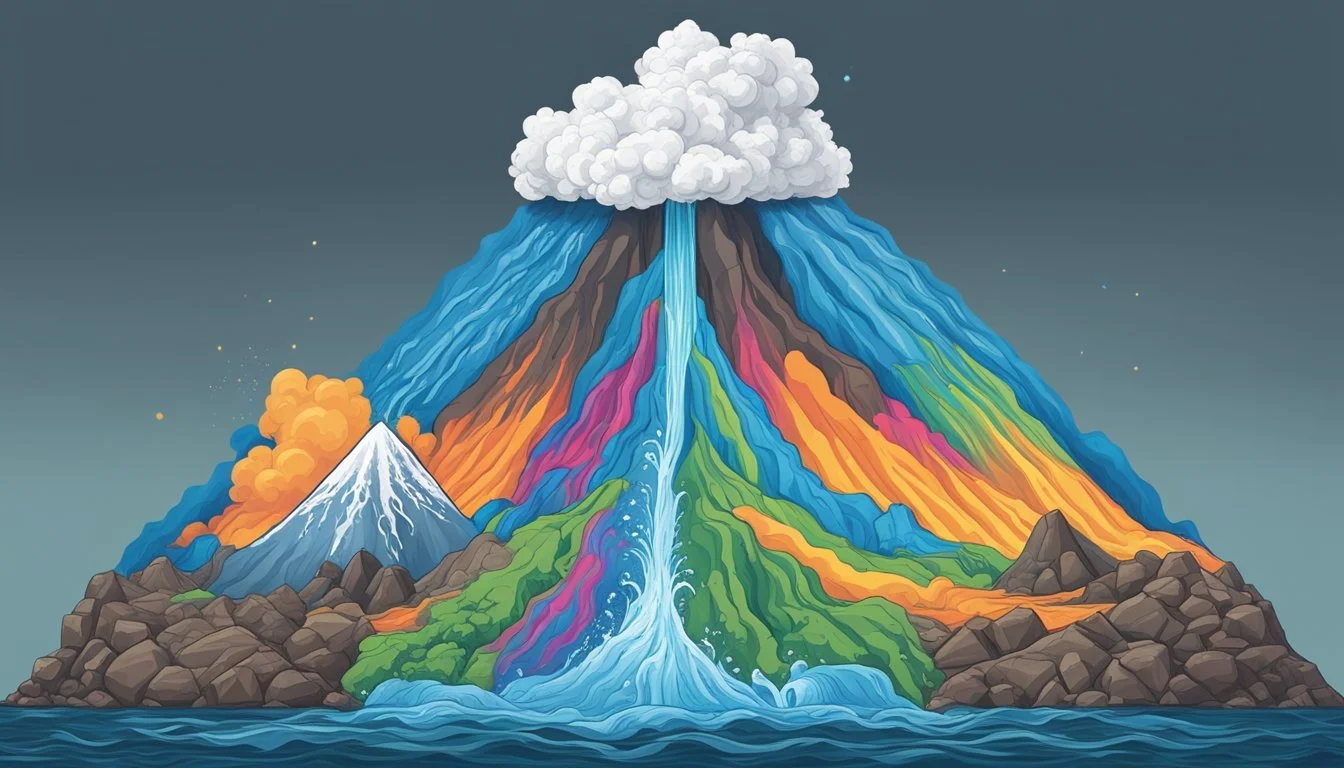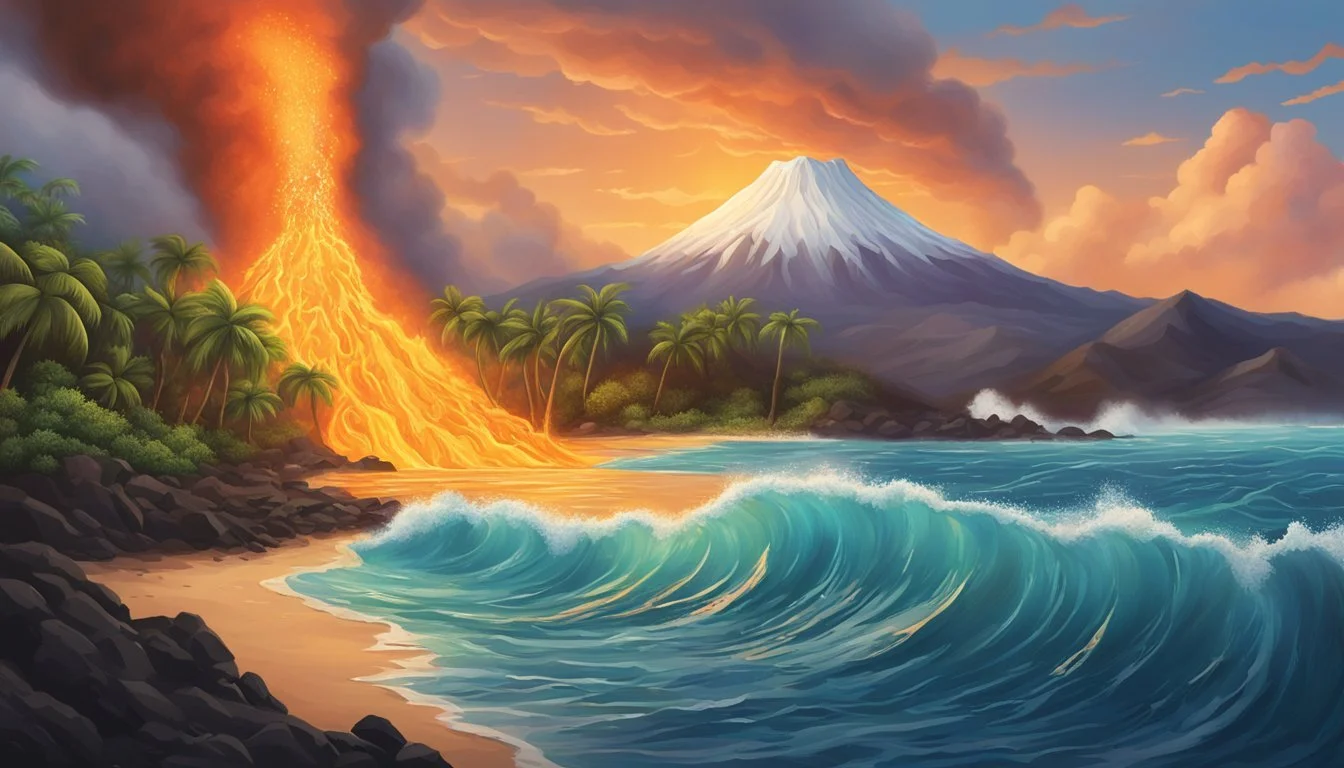Hawai’i Volcanic vs. Liquid Death
Bottled Water Showdown
When it comes to premium bottled water, consumers have various options, each promising unique benefits. Two brands that have gained attention are Hawai’i Volcanic and Liquid Death. While both offer hydration, they differ in their sourcing, packaging, and health benefits.
Hawai’i Volcanic is sourced from Hawaiian volcanic springs and boasts a naturally high alkaline pH, which can help neutralize body acidity. Liquid Death, on the other hand, markets itself with a unique branding approach and packages its water in aluminum cans, which is more environmentally friendly than plastic.
Ultimately, the choice between Hawai’i Volcanic and Liquid Death depends on what you value more in your bottled water—health benefits or sustainable packaging. Regardless of which one you choose, both brands offer quality hydration options that cater to different needs and preferences.
Water Essentials
When comparing Hawai’i Volcanic and Liquid Death, several key aspects of bottled water come to the forefront: pH levels, mineral content, alkalinity, and electrolytes. These factors play a significant role in determining the quality and health benefits of the water.
PH Levels:
Hawai’i Volcanic boasts a naturally high alkaline pH of 8.8, which helps neutralize body acidity.
Liquid Death offers both sparkling and still water options, but specific pH levels are not highlighted.
Alkaline and Mineral Content:
Water with a higher alkaline pH, like Hawai’i Volcanic, can support critical body functions and provide a balanced mineral intake. This water originates from the Mauna Loa Volcano, naturally enriching it with minerals.
Liquid Death typically presents itself more as a lifestyle brand rather than emphasizing these health benefits.
Electrolytes:
Electrolytes are essential for maintaining hydration, muscle function, and overall cellular health. Hawai’i Volcanic, being naturally enriched with minerals from the volcanic source, likely offers a good electrolyte profile.
Liquid Death does not emphasize electrolyte content in its marketing, focusing more on the product's image and packaging.
Mineral Sources:
Hawai’i Volcanic sources water from the Mauna Loa Volcano's snowmelt and rain, filtering through volcanic rock, which adds beneficial minerals.
Liquid Death sources its water from mountain springs and emphasizes clean, refreshing taste, with less focus on the detailed mineral composition.
In essence, both brands aim to bring premium bottled water to the market but approach it from different angles. Hawai’i Volcanic focuses on natural health benefits, while Liquid Death markets its unique brand identity.
Overview of Hawai’i Volcanic
Hawai’i Volcanic water offers a unique combination of natural sourcing, health benefits, and sustainability efforts. It is hailed for its naturally alkaline pH and commitment to eco-friendly practices.
Source and Filtration Process
Hawai’i Volcanic water is sourced from the Mauna Loa Volcano on the Big Island of Hawai’i. Rain and snowmelt from this region are naturally filtered through the porous volcanic rock, which imparts essential minerals and a unique smooth taste to the water.
The filtration process involves running the water through several layers of lava rock, which helps ensure its purity and naturally alkaline state. This natural filtering process is both effective and sustainable.
Health Benefits and Alkalinity
One of the primary health benefits of Hawai’i Volcanic water is its high alkaline pH of around 8.8. This alkalinity helps to neutralize excess acidity in the body, promoting a balanced pH level.
The water is also rich in essential minerals and electrolytes, which support overall bodily functions. Consuming alkaline water can enhance hydration and may contribute to improved digestion and overall vitality.
Environmental Impact and Sustainability
Hawai’i Volcanic is deeply committed to sustainability initiatives. The company emphasizes using 100% recycled plastic for their bottles, reducing their environmental footprint.
They also support bio-diverse forest preserves and have introduced the Kokua Initiative to enhance environmental and community wellness. These efforts reflect the brand’s dedication to preserving Hawai’i’s natural beauty and resources.
This multi-faceted approach not only provides high-quality water but also aligns with sustainable and ethical practices, ensuring a minimal ecological impact.
Overview of Liquid Death
Liquid Death offers a unique approach to bottled water, combining a bold brand philosophy and eco-conscious packaging with a variety of products targeting a specific audience.
Brand Philosophy and Image
Liquid Death aims to disrupt the bottled water market with its edgy, irreverent branding. The tagline "Murder Your Thirst" highlights the brand's attempt to appeal to younger, more adventurous consumers. The company positions itself as a rebellion against conventional water brands, using provocative marketing to stand out.
Liquid Death’s branding includes a heavy metal and punk rock aesthetic. This image is key to its identity, attracting customers who align with its bold and unapologetic style.
Packaging and Environmental Considerations
Liquid Death uses aluminum cans, which are 70% recyclable, to package its water. This choice reflects the brand's commitment to reducing plastic waste. The use of aluminum over plastic serves to underscore their eco-friendly message.
The cans contain mountain spring water sourced from Austria, enhancing the product's premium feel. With its recyclable packaging, Liquid Death aims to offer an environmentally responsible alternative to traditional bottled water.
Variety and Audience
Liquid Death provides both sparkling and flat water options. The sparkling variety is known for its carbonation and unique taste, adding another layer to the brand's appeal. This variety allows Liquid Death to cater to different preferences.
The primary audience includes environmentally conscious consumers and those drawn to the brand's rebellious aesthetic. Liquid Death can be found in major retailers like Whole Foods and 7-11, making it accessible to a broad audience.
The audience is further expanded by the brand's active online presence and direct-to-consumer sales through their website. These channels help maintain a strong connection with their dedicated customer base.
Comparative Analysis
The comparison between Hawai’i Volcanic and Liquid Death bottled water includes several important factors such as nutritional content, taste, cost, and availability. This analysis aims to provide a detailed look at each aspect to help decide which bottled water might best suit your needs.
Nutritional Content and Hydration
Hawai’i Volcanic water has shown a Total Dissolved Solids (TDS) rating of approximately 40 ppm, indicating a low mineral content. Its pH level is about 5, which classifies it as slightly acidic.
Liquid Death, sourced from the Austrian Alps, is a mountain spring water. This option may provide a more balanced mineral profile. Though exact values weren't specified in the results, mountain spring waters typically contain beneficial minerals like calcium, magnesium, and silica, which contribute to hydration and overall health.
Taste Profile and Preference
Taste plays a crucial role in selecting bottled water. Hawai’i Volcanic, with its low TDS and slightly acidic pH, can have a cleaner yet subtly sharp taste.
Liquid Death offers both still and sparkling options. The unflavored sparkling water received positive feedback for its crisp taste, while the flavored varieties, like Mango Chainsaw, provide a light sweetness without overpowering natural flavors. Preference largely depends on individual taste, but both options present quality choices.
Cost Effectiveness
Cost is a significant factor when choosing bottled water. Liquid Death is available at several retailers like Whole Foods Market and Target, typically priced around $1.62 to $1.69 per can.
Hawai’i Volcanic’s pricing details were not specified, but based on similar premium water brands such as Waiākea Water, the cost is likely comparable to top luxury brands like Fiji Water and Evian. While both options might lean towards the higher end of the price spectrum, the cost reflects their quality and sourcing.
Accessibility and Market Availability
Liquid Death's availability spans numerous major retailers including Target, Amazon, Walmart, and Whole Foods Market, making it easily accessible to many consumers. Its recyclability also adds an eco-friendly appeal.
Hawai’i Volcanic, while also available through various distribution channels, may not have as widespread distribution as Liquid Death. This could make it slightly harder to find, depending on your location. For those looking at sustainability, both brands have their own commitments to environmental responsibility.
Environmental and Sustainability Concerns
Hawai’i Volcanic and Liquid Death approach environmental sustainability from distinct angles. Hawai’i Volcanic prioritizes sustainable sourcing by capturing less than 0.003% of the water yielded from volcanic slopes, ensuring minimal environmental disruption.
Liquid Death, on the other hand, focuses on reusable packaging. They predominantly use aluminum cans, which are more easily recyclable compared to plastic. This choice aims to reduce plastic pollution and promote a more eco-friendly image.
Hawai’i Volcanic emphasizes conservation. Their methods underline the importance of preserving purest environments. This includes protecting the natural sources and maintaining the environmental balance of Hawai’i’s unique ecosystems.
Both brands highlight their commitment to sustainability. Hawai’i Volcanic contributes to clean water initiatives and avoids excessive plastic use, while Liquid Death sponsors environmental causes and pushes for reduced single-use plastic waste.
Supporting products that use glass or reusable containers is crucial for consumers interested in reducing their carbon footprint and promoting sustainable practices.
Final Thoughts
When comparing Hawai’i Volcanic and Liquid Death, several factors come into play. Both brands offer natural water options and cater to different preferences.
Liquid Death provides both still and sparkling water. It boasts a significant edge over many competitors due to its packaging in aluminum cans, which can be more environmentally friendly than plastic.
Hawai’i Volcanic, on the other hand, markets itself as a premium product derived from volcanic sources. Its emphasis on health benefits from natural filtration processes is a key selling point.
For those prioritizing healthiest options, Liquid Death's lack of additives is a notable feature. Hawai’i Volcanic also claims natural purity and beneficial minerals.
Availability can influence preference. Liquid Death is widely available in many major grocery chains and online, making it accessible to a larger audience.
Consumer choice might ultimately hinge on taste, availability, and environmental impact. Both brands have carved out niches in the crowded bottled water market, each with unique attributes that cater to different consumer values and needs.
More About Hawai’i Volcanic
Acqua Pana vs Hawaii Volcanic: Which Bottled Water is Better?
Antipodes vs Hawaii Volcanic: Which Bottled Water is Better?
Aqua Carpatica vs Hawaii Volcanic: Which Bottled Water is Better?
Arrowhead vs Hawaii Volcanic: Which Bottled Water is Better?
Boxed Water vs Hawaii Volcanic: Which Bottled Water is Better?
Castle Rock vs Hawaii Volcanic: Which Bottled Water is Better?
Core Hydration vs Hawaii Volcanic: Which Bottled Water is Better?
Deer Park vs Hawaii Volcanic: Which Bottled Water is Better?
Hawaii Volcanic vs 1907water: Which Bottled Water is Better?
Hawaii Volcanic vs Alkaline88: Which Bottled Water is Better?
Hawaii Volcanic vs Big Chill: Which Bottled Water is Better?
Hawaii Volcanic vs BodyArmor: Which Bottled Water is Better?
Hawaii Volcanic vs Cascade Mountain: Which Bottled Water is Better?
Hawaii Volcanic vs CBD Living: Which Bottled Water is Better?
Hawaii Volcanic vs Crystal Geyser: Which Bottled Water is Better?
Hawaii Volcanic vs Crystal Lake: Which Bottled Water is Better?
Hawaii Volcanic vs Essence pH10: Which Bottled Water is Better?
Hawaii Volcanic vs Kirkland Signature: Which Bottled Water is Better?
Hawaii Volcanic vs Open Water: Which Bottled Water is Better?
Hawaii Volcanic vs Proud Source: Which Bottled Water is Better?
Hawaii Volcanic vs Pure Life: Which Bottled Water is Better?
Hawaii Volcanic vs Purely Sedona: Which Bottled Water is Better?
Hawaii Volcanic vs Richard's Rainwater: Which Bottled Water is Better?
Hawaii Volcanic vs Simple Truth: Which Bottled Water is Better?
Hawaii Volcanic vs Talking Rain AQA: Which Bottled Water is Better?
Hawaii Volcanic vs Weird Water: Which Bottled Water is Better?
Hawaii Volcanic vs Whole Foods 365: Which Bottled Water is Better?
Hawaii Volcanic vs Whole Foods Italian Still Mineral water: Which Bottled Water is Better?
Hawaiian Springs vs Hawaii Volcanic: Which Bottled Water is Better?
Ice Mountain vs Hawaii Volcanic: Which Bottled Water is Better?
Icelandic Glacial vs Hawaii Volcanic: Which Bottled Water is Better?
Just Water vs Hawaii Volcanic: Which Bottled Water is Better?
Mountain Valley Spring Water vs Hawaii Volcanic: Which Bottled Water is Better?
Nestle Pure Life vs Hawaii Volcanic: Which Bottled Water is Better?
Poland Spring vs Hawaii Volcanic: Which Bottled Water is Better?
San Pellegrino vs Hawaii Volcanic: Which Bottled Water is Better?
Smartwater vs Hawaii Volcanic: Which Bottled Water is Better?
Solan de Cabras vs Hawaii Volcanic: Which Bottled Water is Better?
Topo Chico vs Hawaii Volcanic: Which Bottled Water is Better?
Zephyrhills vs Hawaii Volcanic: Which Bottled Water is Better?
More About Liquid Death
Aqua Carpatica vs Liquid Death: Which Bottled Water is Better?
Core Hydration vs Liquid Death: Which Bottled Water is Better?
Hawaiian Springs vs Liquid Death: Which Bottled Water is Better?
Ice Mountain vs Liquid Death: Which Bottled Water is Better?
Icelandic Glacial vs Liquid Death: Which Bottled Water is Better?
Liquid Death vs Cascade Mountain: Which Bottled Water is Better?
Liquid Death vs Crystal Geyser: Which Bottled Water is Better?
Liquid Death vs Crystal Lake: Which Bottled Water is Better?
Liquid Death vs Essence pH10: Which Bottled Water is Better?
Liquid Death vs Kirkland Signature: Which Bottled Water is Better?
Liquid Death vs Proud Source: Which Bottled Water is Better?
Liquid Death vs Richard's Rainwater: Which Bottled Water is Better?
Liquid Death vs Simple Truth: Which Bottled Water is Better?
Liquid Death vs Talking Rain AQA: Which Bottled Water is Better?
Liquid Death vs Whole Foods 365: Which Bottled Water is Better?
Liquid Death vs Whole Foods Italian Still Mineral water: Which Bottled Water is Better?
Mountain Valley Spring Water vs Liquid Death: Which Bottled Water is Better?
Nestle Pure Life vs Liquid Death: Which Bottled Water is Better?
Poland Spring vs Liquid Death: Which Bottled Water is Better?
Purely Sedona vs Liquid Death: Which Bottled Water is Better?
San Pellegrino vs Liquid Death: Which Bottled Water is Better?
Solan de Cabras vs Liquid Death: Which Bottled Water is Better?








